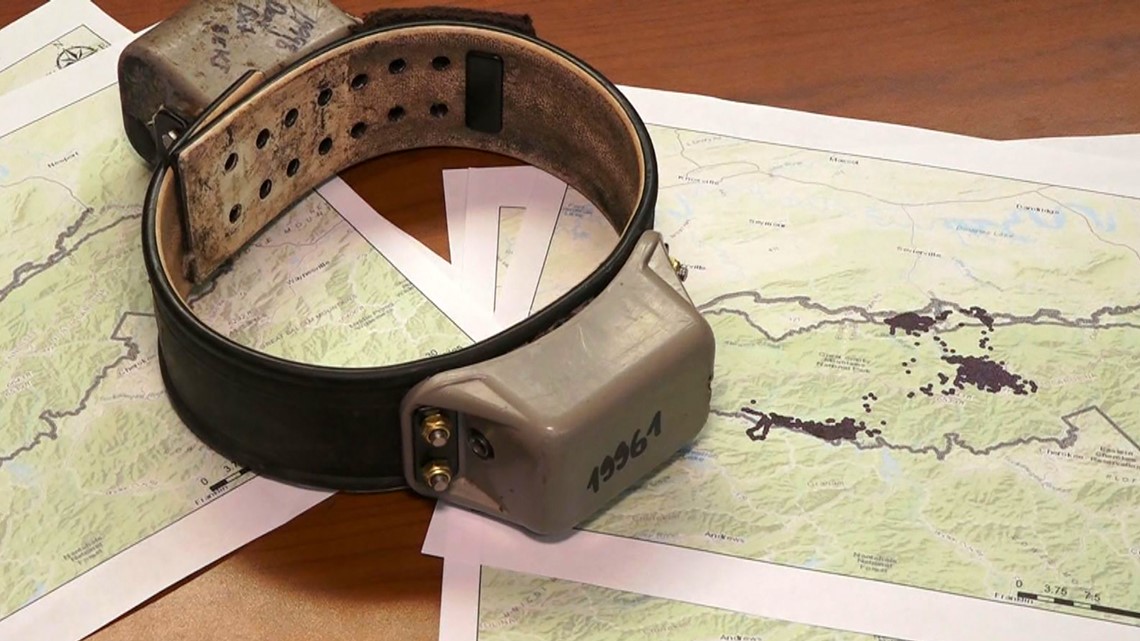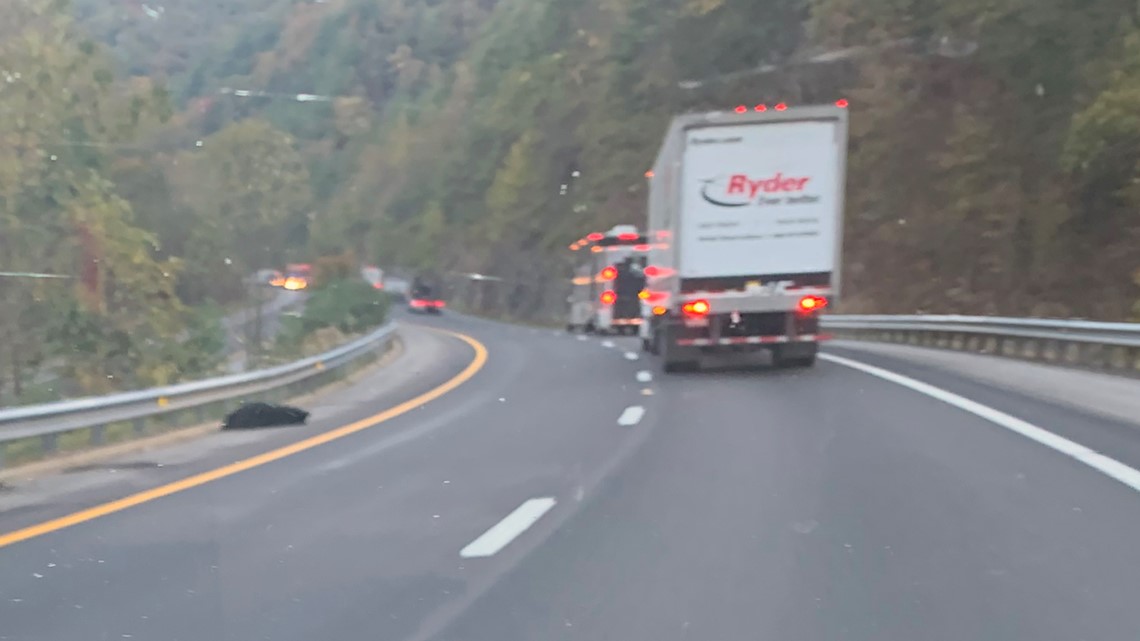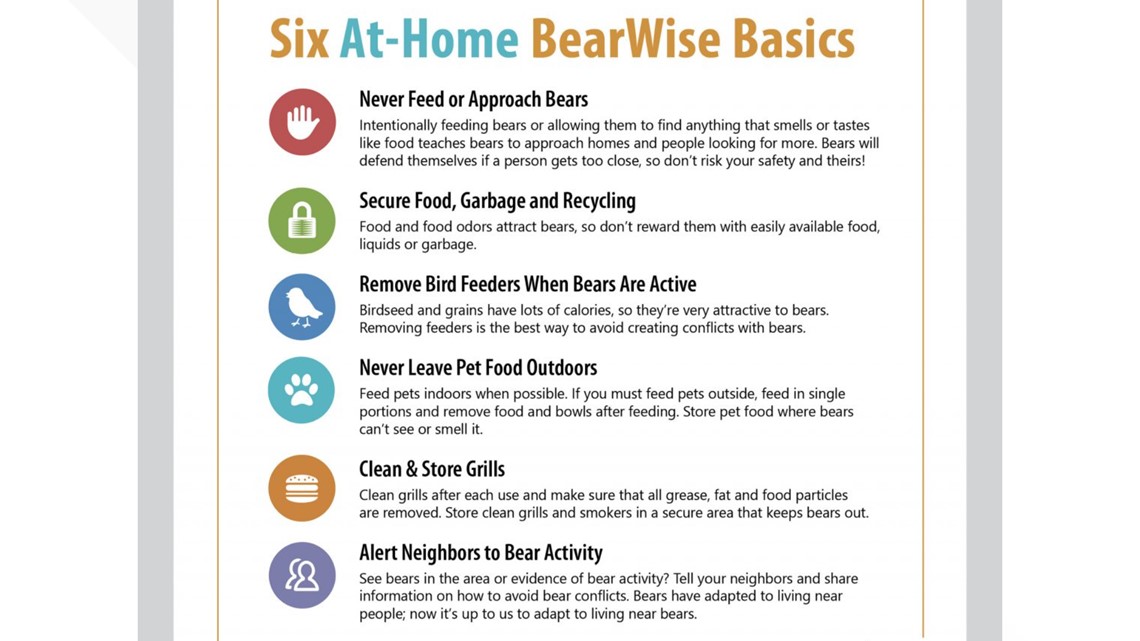KNOXVILLE, Tenn. — The bear population in the Smokies is growing. According to Wildlife Biologists in the Great Smoky Mountains National Park, there could be more than 1,900 Black Bears in the greater Gatlinburg area.
Meanwhile, visitation at the national park is off the charts. In 2021, more than 14.1 million people visited the park.
The resident population of Sevier County is expanding, too. U.S. Census data estimated just under 100,000 full-time community members.
As the bear and human populations grow alongside one another, so do the conflicts. Wildlife biologists at the GSMNP, the BearWise Task Force, and Safe Passage paired up to be proactive and find solutions before it becomes a problem.
Bill Stiver, one of the GSMNP wildlife biologists, has been working with bears for decades. He watched the population grow, thrive, and then begin to creep into the tourist area of Gatlinburg. He was able to do all of this from his computer.
"This is a Vectronic GPS collar that we use on black bears," Stiver said.


The concept of GPS tracking bears isn't new. This group has been doing it since around 2015.
"I can literally sit on the computer, and watch as, you know, every few hours and get data and see how bears are moving on the landscape. So pretty, pretty cool," Stiver said.
Scientists track the bears leaving the national park, crossing roads, and even inching into the downtown areas of Gatlinburg and Pigeon Forge.
In other words, one man's trash becomes another bear's treasure.
"They might find an open dumpster. They might find bird feeders and, and things of that nature," Stiver said. "Everybody that has a bear problem wants you to come to their backyard and catch it and move it somewhere else. And everybody thinks that those bears live happily ever after."
That's where Bill Stiver and Kristen Botzet's research comes in.
Sometimes, when a bear has a conflict with humans, it will be moved to a different location. However, according to wildlife biologists, bears have great memories and many try to wander back to the places they previously found food. That is why she is tracking those relocated bears and the success rate of their survival.
The Great Smoky Mountains National Park got a $40,000 grant from the National Park Service to provide research around one question.
"We have resident bears and relocated bears ... and this study looks at, is the mortality rate different for one versus the other?" Stiver said.
He said as of right now, the answer is yes. The mortality rate is higher for relocated bears.
"The majority of those bears are dying in some form or fashion within four months," Stiver said. "Whether it's lack of food resources, additional conflict, killed by hunters, hit by cars or things of that nature."


Stiver and Botzet said bears are trying to travel back to their known locations, and many of them are trying to cross the interstate for the first time.
"It's a four-lane interstate, right? Seventy miles per hour. And it has this concrete divider in the center, which is really tough for any wildlife to cross," Botzet said.
The wildlife biologists are pairing their GPS data with cameras along the interstate. The "Safe Passage" cameras were installed by a team of researchers at the National Parks Conservation Association and Wildlands Network. Together, they capture animal activity along the interstate and gain insight into where these animals are attempting to cross.


Safe Passages' goal as an organization is to reduce the animal mortality rate along I-40 through the insertion of more safe passageways for wildlife. They also want to increase driver awareness along the route, specifically on the section of the interstate through the Pigeon River Gorge.
However, wildlife biologists said the easiest way to reduce the bear mortality rate is to prevent the reason for their removal in the first place.
"If we really want to protect bears, then we need to manage our food and garbage. We need to manage the attractant so that we're not moving bears," Stiver said.
Stiver is a part of the BearWise Task Force in East Tennessee. The organization is nationwide and provides people and businesses with tips on how to coexist with bears.
They have Six At-Home BearWise Basics to encourage people to live responsibly in bear county, listed below.
- Never feed or approach bears
- Secure food, garbage, and recycling
- Remove bird feeders when bears are active
- Never leave pet food outdoors
- Clean and store grills
- Alert neighbors to bear activity


Stiver said the best way to reduce the mortality rate of bears on I-40 is to follow those tips.

